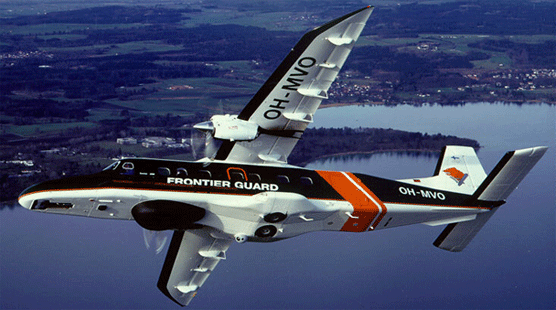Press release 2013-05-17 at 17:10
A surveillance flight operation conducted by Finland, Sweden and Estonia last Friday did not discover any verified oil spills in the Northern Baltic Sea. On the other hand, the planes reported two other spills, one of which was visible in a satellite image.
During the MiniCEPCO operation, surveillance aircraft from all three countries performed enhanced patrol flights during more than 12 hours, over northern Baltic shipping routes. Oil spills were also monitored through four satellite images.
Coordinated by Finland, the MiniCEPCO operation formed part of the Helsinki Commission's (Baltic Marine Environment Commission, HELCOM) marine oil spill surveillance cooperation, which was launched in late 1980s. In the Baltic Sea area, the number of oil spill observations has steadily decreased, mainly due to regular surveillance and improved legislation. According to HELCOM statistics, surveillance aircraft reported 122 oil spills in the Baltic Sea in 2011.
Finnish, Swedish and Estonian pollution surveillance aircraft patrol the Baltic Sea for 3,500–4,000 flight hours a year. All aircraft participating in the MiniCEPCO operation carry recently updated equipment, which detects oil spills up to 30 kilometres from the flight route. The surveillance system also makes it possible to identify ships several kilometres away. Satellite images in support of oil spill surveillance are provided by the European Maritime Safety Agency's (EMSA) CleanSeaNet service.
Releasing oil and any oil-containing substances into the Baltic Sea is prohibited. HELCOM aims to eliminate illegal oil spills into the Baltic Sea by 2021.

A Finnish pollution surveillance aircraft. Photo: FinnishThe Finnish Border Guard.
For further information, please contact:
Kati Tahvonen, Senior Officer
Finnish Environment Institute (SYKE)
firstname.lastname@ymparisto.fi
Tel. +358 400 148 754
Aira Saloniemi, Chief Editor for Web Services
SYKE Communications
firstname.lastname@ymparisto.fi
Tel. +358 400 148 875